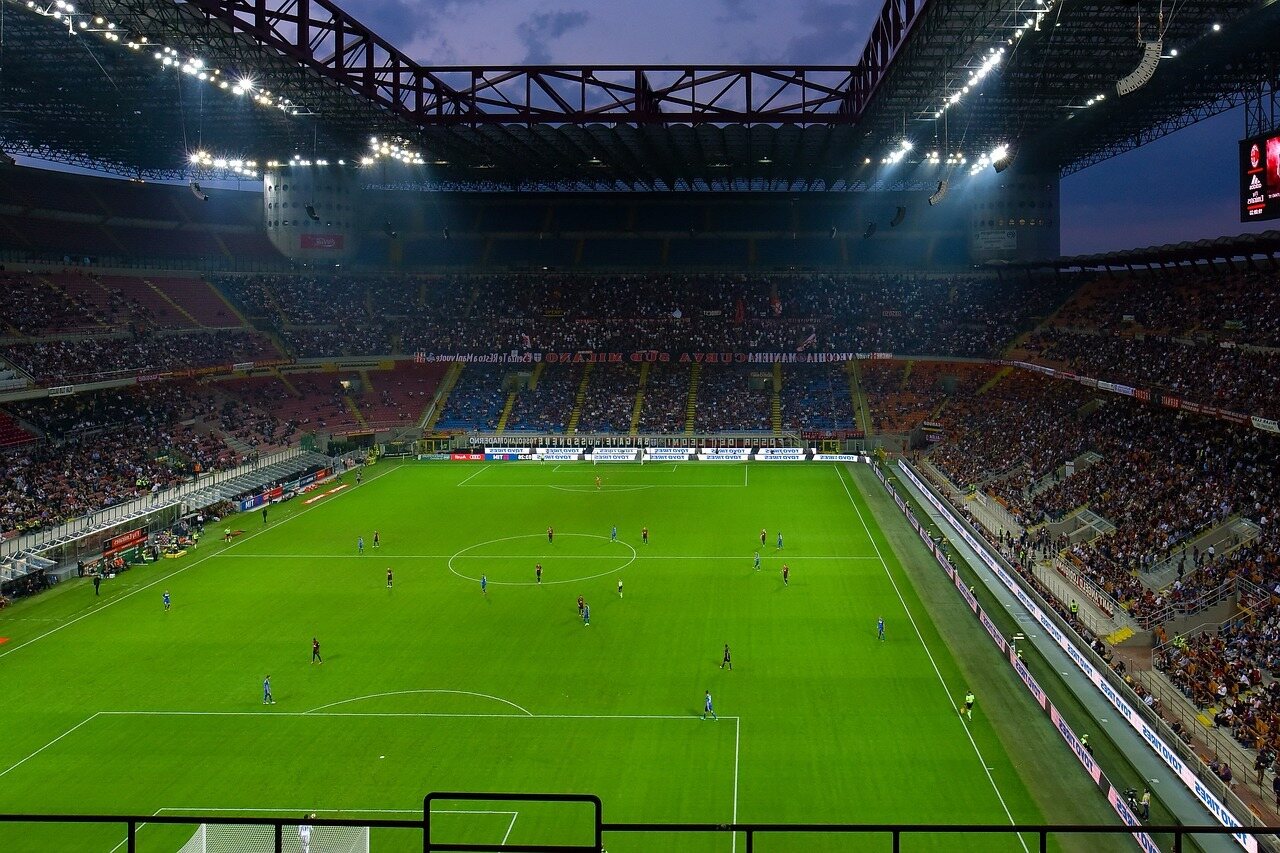
Football stadiums in Italy are more than just places to watch a match; they are historic landmarks filled with passion and tradition. Have you ever wondered what makes these arenas so special? From the iconic San Siro in Milan to the ancient Stadio Olimpico in Rome, each stadium has its own unique story and charm. Whether you're a die-hard football fan or just curious about Italian culture, these stadiums offer a glimpse into the heart of Italy's love for the beautiful game. Let's dive into 25 fascinating facts about these incredible venues that host some of the most thrilling matches in the world.
Key Takeaways:
- Italian football stadiums have a rich history, hosting iconic matches and events. From the historic Stadio Giuseppe Meazza to the modernized Stadio San Paolo, these venues are architectural marvels with unique features and trivia.
- Italian stadiums have undergone significant upgrades and renovations, ensuring they meet modern standards. From San Siro's major renovations for the 1990 World Cup to Stadio Renato Dall'Ara's upcoming improvements, these stadiums continue to evolve while preserving their unique charm.
The History of Italian Football Stadiums
Italian football stadiums have a rich history, reflecting the country's passion for the sport. These venues have hosted countless memorable matches and events.
- The Stadio Giuseppe Meazza, commonly known as San Siro, opened in 1926 and is one of the oldest football stadiums in Italy.
- Stadio Olimpico in Rome, built in 1937, has hosted the Olympics, World Cup, and European Championships.
- Stadio Artemio Franchi in Florence was designed by renowned architect Pier Luigi Nervi in 1931.
- Stadio Luigi Ferraris in Genoa, opened in 1911, is the oldest stadium still in use in Italy.
- Stadio Marc'Antonio Bentegodi in Verona, built in 1963, was a venue for the 1990 FIFA World Cup.
Iconic Matches and Events
Italian stadiums have been the stage for some of the most iconic matches and events in football history.
- San Siro hosted the 1965 European Cup final where Inter Milan triumphed over Benfica.
- Stadio Olimpico was the venue for the 1990 FIFA World Cup final, where West Germany defeated Argentina.
- Stadio San Paolo in Naples saw Diego Maradona lead Napoli to their first Serie A title in 1987.
- Stadio Artemio Franchi hosted the 1934 World Cup semi-final between Austria and Italy.
- Stadio Luigi Ferraris was the site of the infamous 1990 World Cup match between Ireland and Romania, which ended in a penalty shootout.
Architectural Marvels
Italian football stadiums are not just venues for sports but also architectural marvels.
- San Siro's distinctive red girders and spiral ramps make it an architectural icon.
- Stadio Olimpico features a unique elliptical shape and a roof supported by steel cables.
- Stadio Artemio Franchi is known for its innovative use of reinforced concrete.
- Stadio San Paolo's design includes a distinctive open-air structure with no roof over the stands.
- Stadio Renato Dall'Ara in Bologna, built in 1927, features a historic tower that offers panoramic views of the city.
Modern Upgrades and Renovations
Many Italian stadiums have undergone significant upgrades and renovations to meet modern standards.
- San Siro underwent major renovations for the 1990 World Cup, including the addition of a new roof.
- Stadio Olimpico was extensively renovated for the 2009 UEFA Champions League final.
- Stadio Artemio Franchi received upgrades for the 1990 World Cup, including new seating and facilities.
- Stadio San Paolo was modernized in 2019, with new seating, lighting, and a refurbished pitch.
- Stadio Renato Dall'Ara has plans for a major renovation to improve facilities and increase capacity.
Unique Features and Trivia
Italian football stadiums have unique features and interesting trivia that make them stand out.
- San Siro is shared by two rival clubs, AC Milan and Inter Milan, a rare arrangement in football.
- Stadio Olimpico is home to both AS Roma and Lazio, another example of a shared stadium.
- Stadio San Paolo was renamed Stadio Diego Armando Maradona in 2020 to honor the legendary player.
- Stadio Artemio Franchi's main stand is known as the "Maratona" due to its marathon-like length.
- Stadio Luigi Ferraris is located in a residential area, giving it a unique, intimate atmosphere.
Italy's Football Stadiums: A Fascinating World
Italy's football stadiums aren't just places for matches; they're steeped in history, culture, and passion. From the iconic San Siro in Milan to the ancient Stadio Olimpico in Rome, each venue tells its own story. These stadiums have witnessed legendary games, unforgettable moments, and the rise of football legends. They reflect the architectural brilliance and the undying love Italians have for the sport. Visiting these stadiums offers more than just a game; it's a dive into Italy's rich football heritage. Whether you're a die-hard fan or just curious, exploring these stadiums provides a unique glimpse into the heart of Italian football. So next time you're in Italy, make sure to check out these incredible venues. You'll leave with memories that go beyond the final whistle. Football in Italy is more than a sport; it's a way of life.
Frequently Asked Questions
Was this page helpful?
Our commitment to delivering trustworthy and engaging content is at the heart of what we do. Each fact on our site is contributed by real users like you, bringing a wealth of diverse insights and information. To ensure the highest standards of accuracy and reliability, our dedicated editors meticulously review each submission. This process guarantees that the facts we share are not only fascinating but also credible. Trust in our commitment to quality and authenticity as you explore and learn with us.
